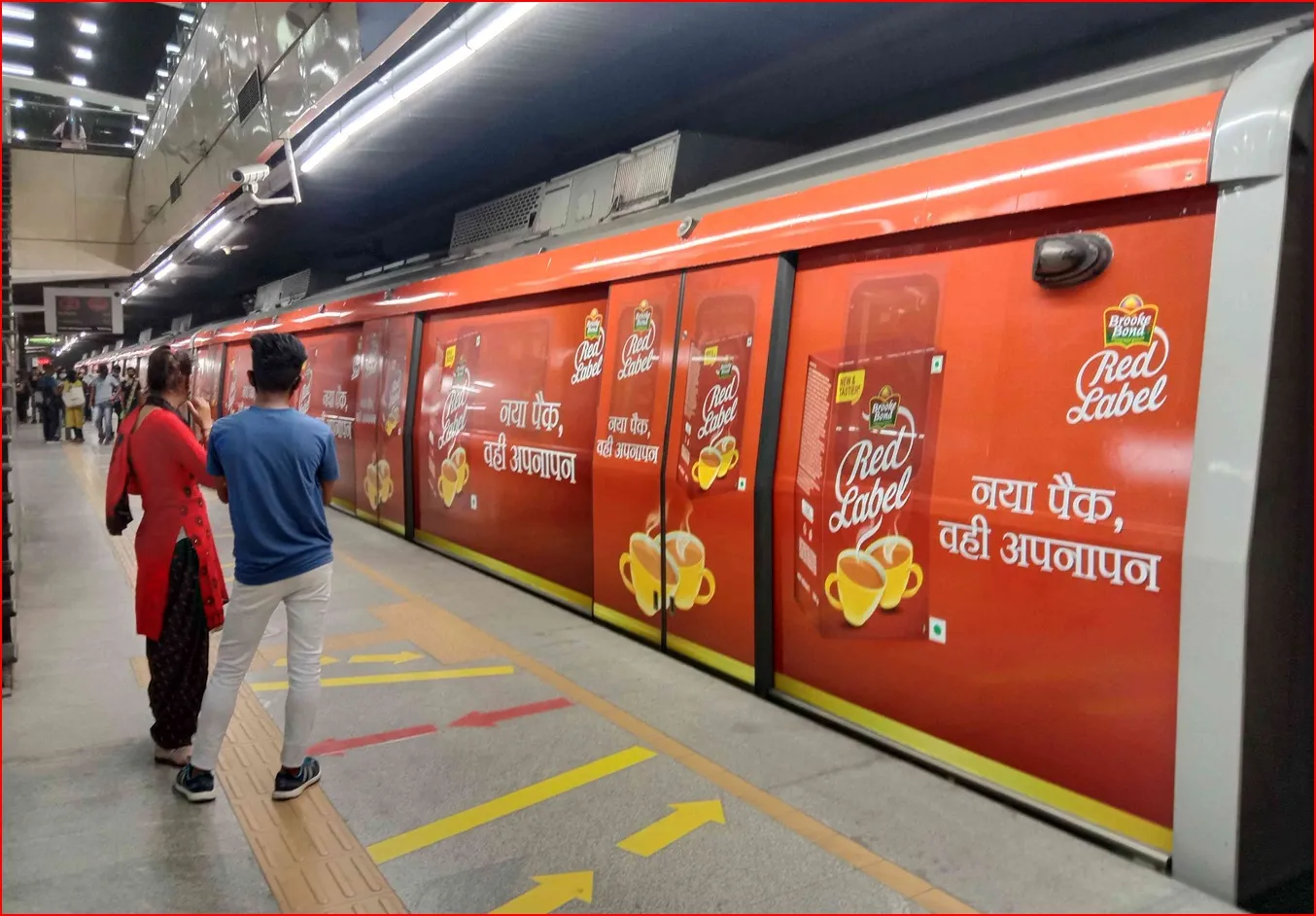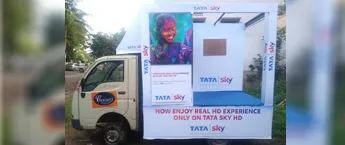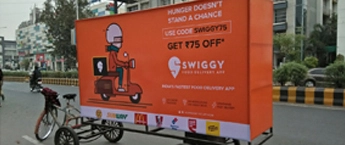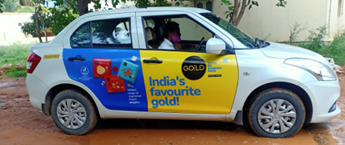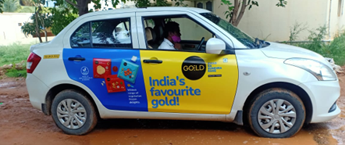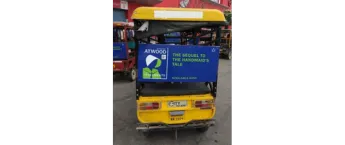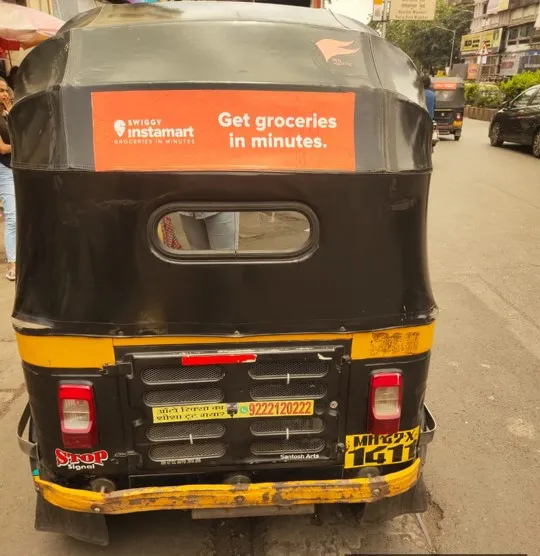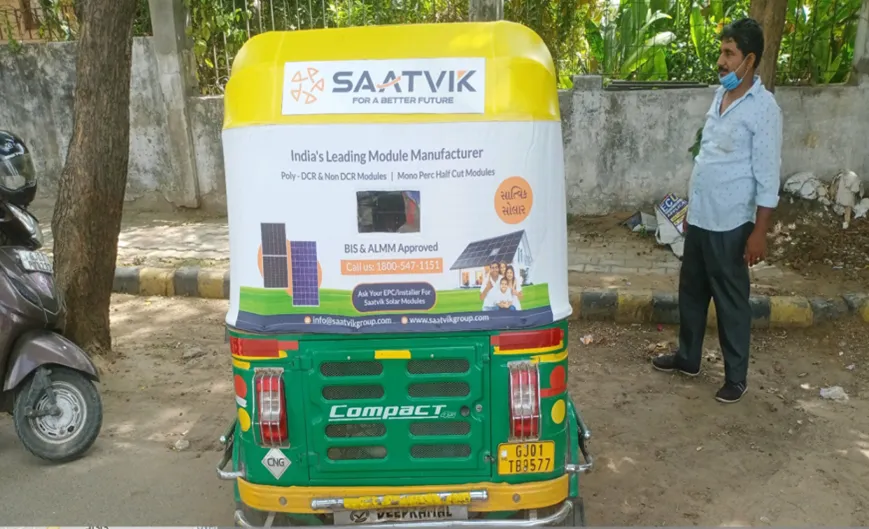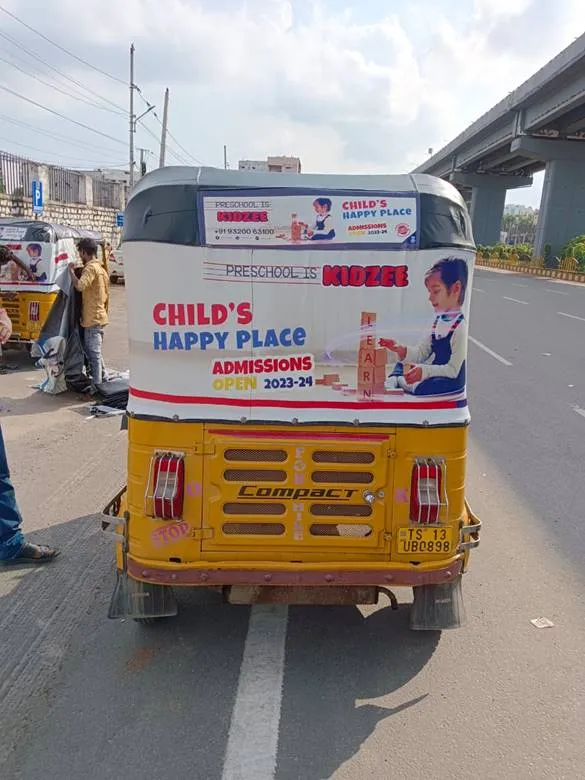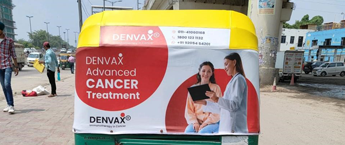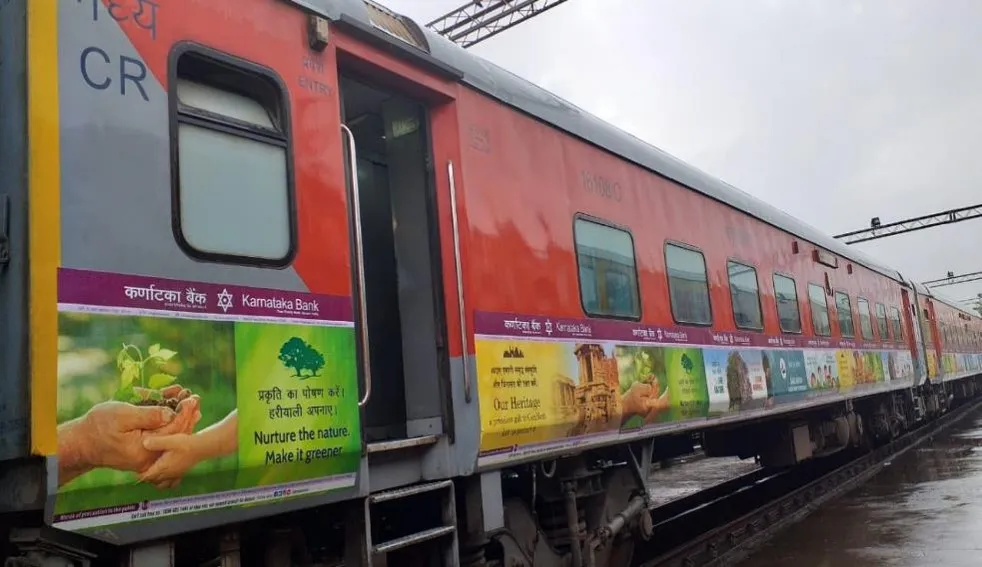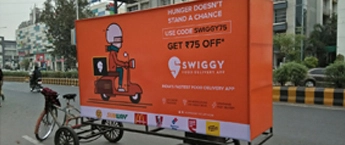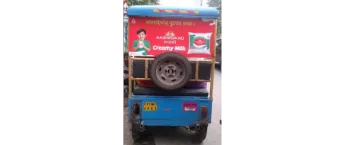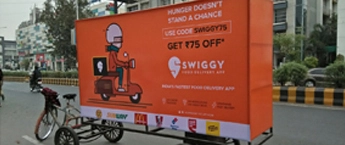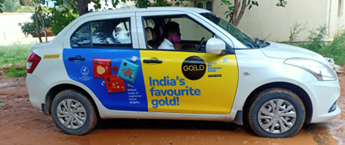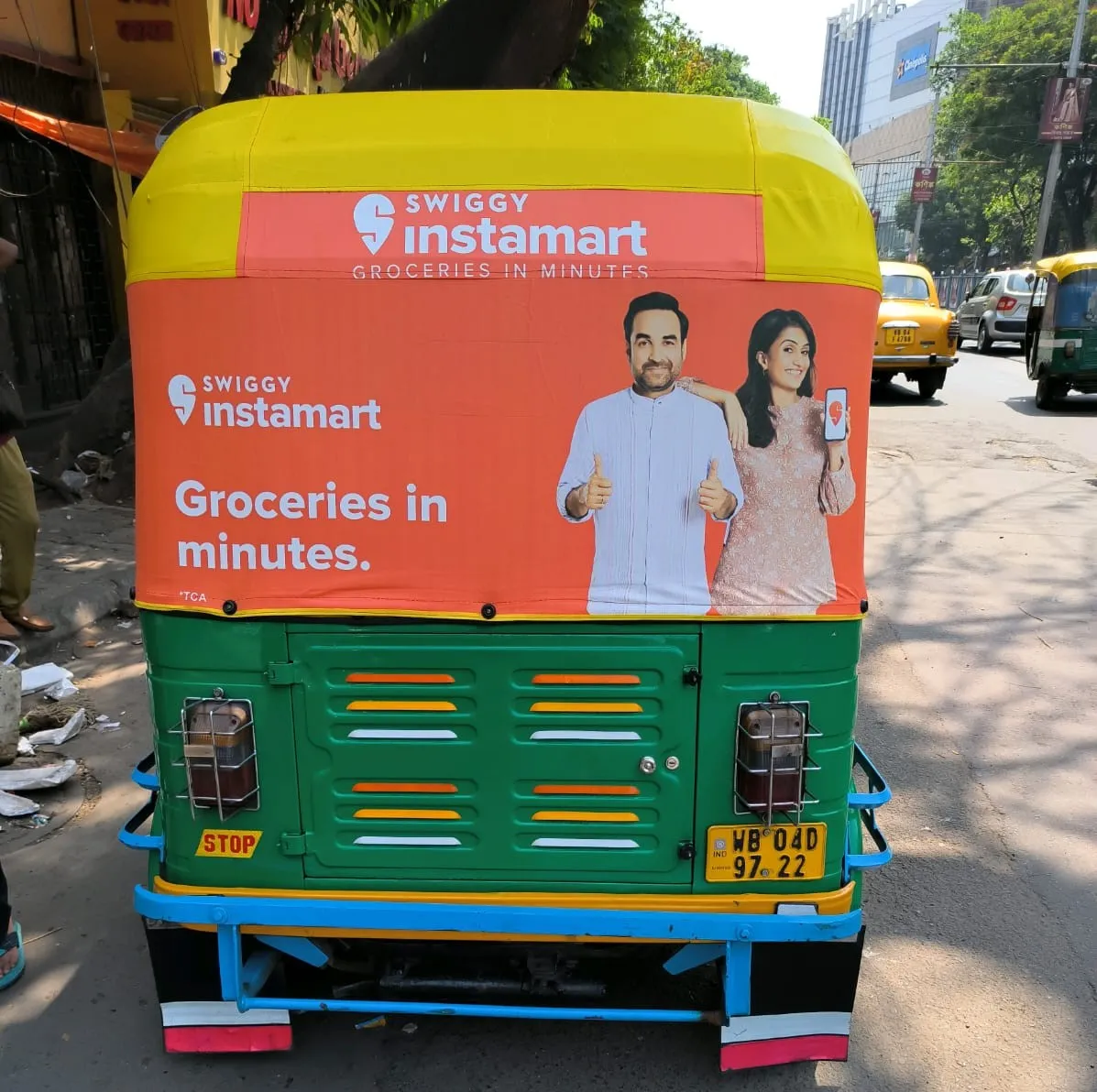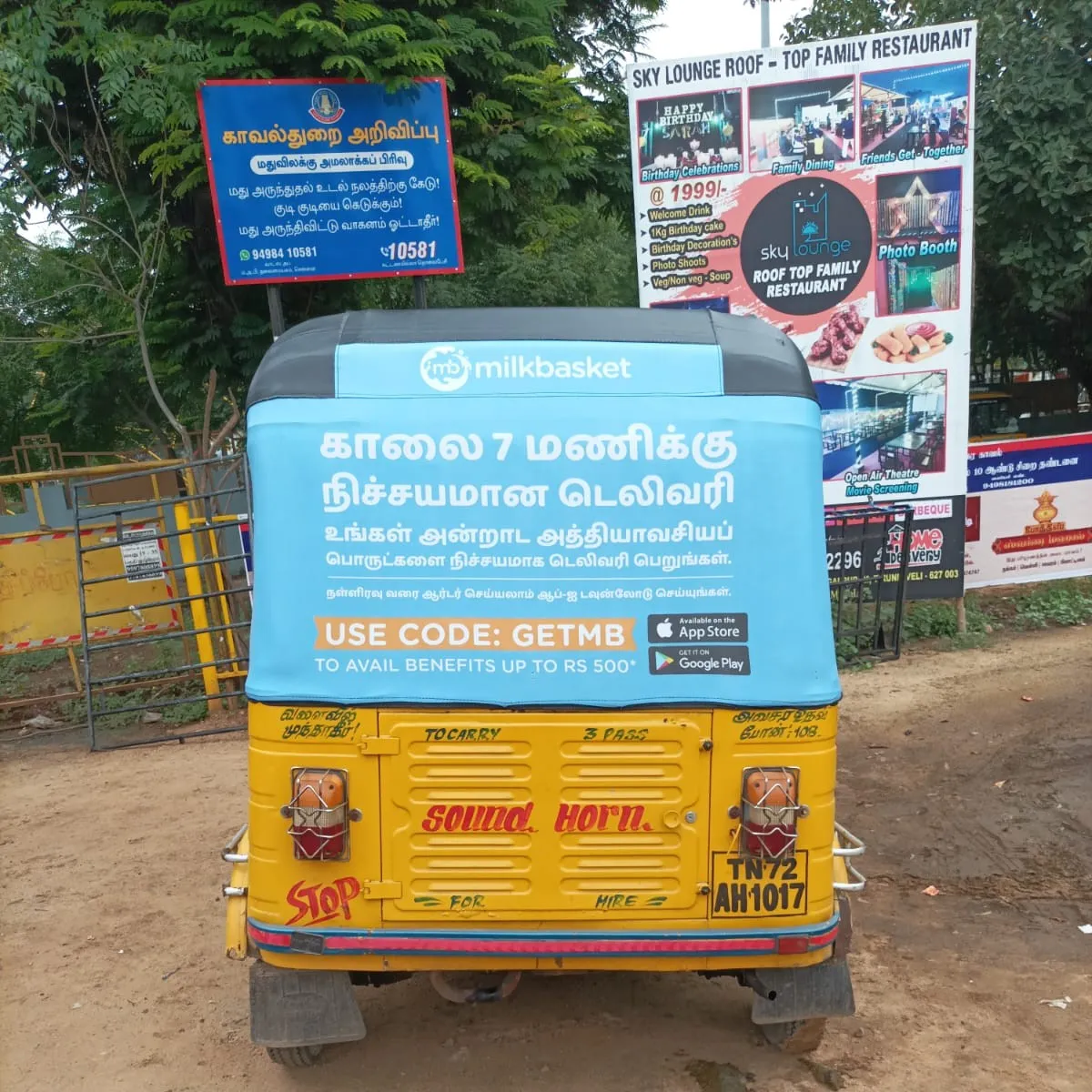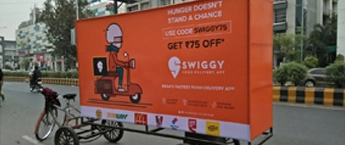Transit Advertising
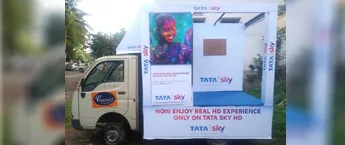
Mobile Van - Tata Ace - Ahmedabad
Media Type: Mobile Van
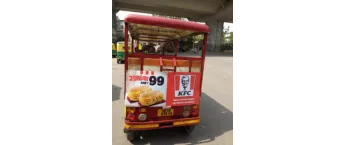
E Rickshaw Branding - Greater Noida
Media Type: E Rickshaw
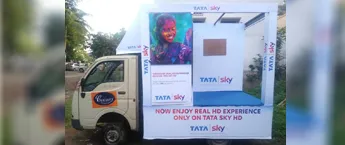
Mobile Van - Tata Ace - Aligarh
Media Type: Mobile Van
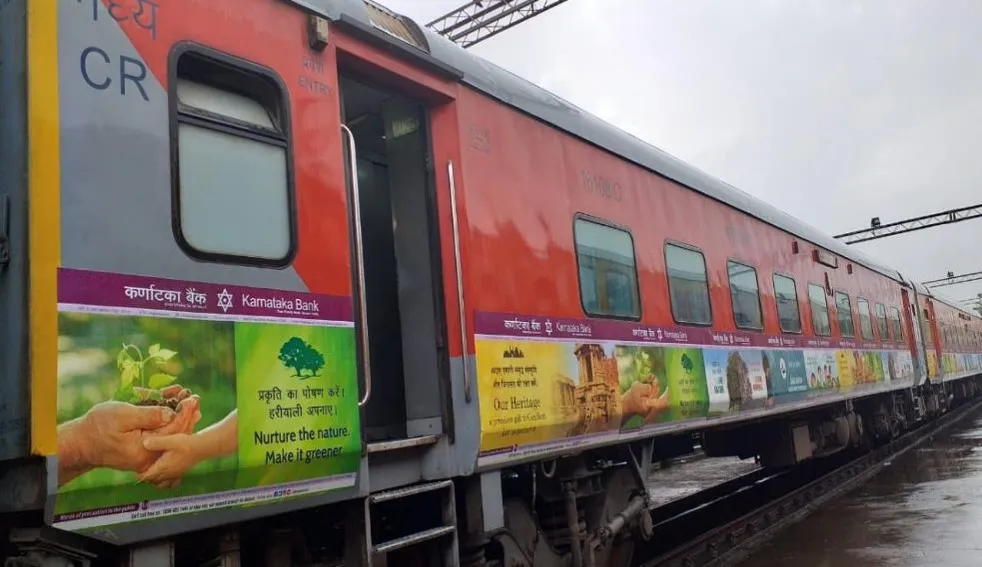
Lucknow - New Delhi Tejas Express
Media Type: Premium Train
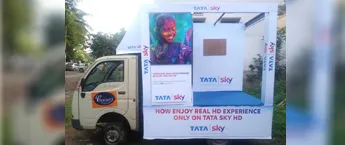
Mobile Van - Tata Ace - Amritsar
Media Type: Mobile Van
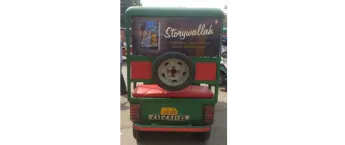
E Rickshaw Branding - Ghaziabad
Media Type: E Rickshaw
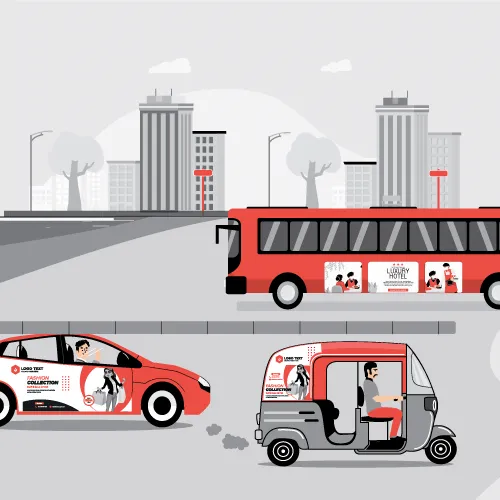
People can't avoid their daily routine of traveling in the city. And this is an opportunity for your brand message displayed prominently on buses, trains, and taxis, traversing bustling cities and reaching a captive audience. This is the power of transit advertising. Partnering with a reliable transit advertising agency in 2024 ensures you get the most out of this dynamic marketing strategy. Rates can vary depending on factors like location, vehicle type, and ad format, but a qualified agency will guide you towards the most impactful options within your budget.
What Is Transit Advertising?
Transit advertising is an advertising strategy involving advertisements on public transportation and public transportation stops and locations. Businesses place ads on taxis, autos, buses, trains, bus stations, terminals, and other stations
The idea here is straight. Public transportation is highly crowded. Moreover, every time a customer visits these locations. Although every business can leverage this advertising option, local businesses usually benefit more from transit advertising.
Transit advertising cost
The beauty of transit advertising lies in its flexibility, allowing you to tailor your campaign to your budget and goals. Here's a breakdown of how costs can vary:
- Location: Transit advertising rates differ significantly depending on the city. Metro cities like Delhi and Mumbai will naturally command a premium compared to smaller towns.
- Vehicle Type: Full bus wraps, naturally, cost more than smaller placements on the side of a bus. Similarly, prime advertising spots inside trains will fetch a higher price than less prominent locations.
- Ad Format: Eye-catching full vehicle wraps or digital displays will cost more than static posters. However, they also offer a higher impact and reach.
- Campaign Duration: Longer campaigns offering sustained exposure typically come at a discounted rate per month compared to short-term bursts.
Here's a rough range to give you an idea (Remember, this can vary):
- Bus Advertising: Full wraps (1.5 lakhs - 3 lakhs per month), partial wraps (70,000 - 1.5 lakhs per month), interior ads (25,000 - 50,000 per month).
- Train Advertising: (Rates can be slightly higher than buses due to higher ridership).
- Taxi Advertising: Rooftops (15,000 - 30,000 per month).
A good transit advertising agency goes beyond just pricing. They will work with you to understand your target audience and recommend the most cost-effective options to achieve maximum impact. This may involve suggesting a strategic mix of placements, like combining a full bus wrap in a high-traffic area with targeted ads inside trains frequented by your ideal demographic.
Why transit Ad is important?
Businesses have been using transportation facilities as a medium of advertisement for a long time. The only difference between then and now is that it’s done with more creativity and strategy. And since it’s one of the channels that grabs a lot of attention, it simply cannot be neglected.
According to statistics, people use public transportation 34 million times each weekday. Also, bus advertising is one of the highest-reaching marketing mediums, reaching over 48 million adults over two weeks. These statistics clearly indicate that it's one of the most effective mass advertising mediums that many businesses need to take advantage of and miss the opportunity to reach a good number of people
Advantages of Transit Advertising in India
India's bustling cities and extensive public transportation network make transit ads a powerful tool for businesses. Here's a deeper dive into the key advantages:
- Localized Targeting
- Forget scattershot marketing. Transit advertising allows you to target your ideal audience with laser precision. Let's say you run a fitness center in South Delhi. You can place eye-catching ads on buses traveling through residential areas in South Delhi, reaching people most likely interested in your services. This granular targeting ensures your message reaches the right people, maximizing the impact of your campaign.
- Diversification
- In today's digital age, consumers are bombarded with online ads. They've become adept at tuning them out. Transit advertising offers a refreshing break from the digital clutter. Imagine commuters stuck in traffic, glancing around for something interesting. Your vibrant and strategically placed ad can capture their attention, leaving a lasting impression. It offers a unique way to reach those who might have otherwise filtered out your message online.
- Affordable
- Compared to other advertising mediums, transit advertising offers a cost-effective way to reach a large audience. While the exact cost depends on factors like location and format (discussed earlier), it generally provides a high return on investment (ROI) for your marketing budget. Imagine the cost of reaching thousands of potential customers daily through strategically placed bus or metro ads compared to the cost of online advertising campaigns. Transit advertising stretches your marketing budget further.
- Wide Audience Reach
- India's public transportation system carries millions of commuters daily. By placing your ad on buses, trains, or taxis, you tap into this vast pool of potential customers. This massive daily exposure can significantly boost brand awareness and brand recall. Even if someone doesn't need your product or service today, seeing your ad consistently can keep your brand top of mind for when they do.
In short, transit advertising offers a targeted, cost-effective, and high-reach solution for businesses in India. It cuts through the digital noise, reaches a diverse audience, and keeps your brand visible in a dynamic and attention-grabbing way.
- India's public transportation system carries millions of commuters daily. By placing your ad on buses, trains, or taxis, you tap into this vast pool of potential customers. This massive daily exposure can significantly boost brand awareness and brand recall. Even if someone doesn't need your product or service today, seeing your ad consistently can keep your brand top of mind for when they do.
Where Can Transit Ad Appear?
- Transit advertising grabs a massive audience's attention, which is probably the best thing about it. On average, people spend about 45 minutes on public transit. So, they’re more likely to see almost all of the ads on a bus or train at least once.
- Buses, cabs, and trains are three of the most used transportation. So, there is a huge scope of repetitive exposure as people travel on the same routes daily.
- Transit advertising works wonders for local brands. Why? Because it is easy to target a local audience. Also, the main focus is to get the people to remember the name of your brand or product. Moreover, they need to select the audience group they want to target and place their ads on specific transports and locations accordingly.
- Transit advertisements have the ability to change a customer’s decision at the last minute. For instance, there’s a high possibility for a commuter to change their mind about buying a product after they see an ad in the local transport they travel in.
- Another fantastic factor that helps businesses is that transit advertisement is relatively cheaper than various other modes of advertising. You only need to purchase an ad on the side of transport at an affordable CPM.
Best time to choose a transit ad for your business.
Transit advertising isn't a one-size-fits-all solution. However, for certain marketing goals, it can be a powerful tool. Here's a breakdown of when transit advertising shines brightest for your business:
Case 1: Boosting Brand Awareness
Are you a new business or looking to revitalize your brand image? Transit advertising excels at getting your brand seen by a large and diverse audience throughout the day. With captive commuters on buses, trains, and taxis, your message has a chance to sink in and leave a lasting impression. This repetitive exposure builds brand recognition, making you a familiar face (or logo) in the crowd.
Think about it. Eye-catching coffee shop ads displayed on buses traversing the city's busy streets. Every morning, potential customers see your brand, associating it with their daily coffee ritual. Over time, this consistent exposure makes your brand top-of-mind when they're craving a caffeine fix.
Case 2: Promote Local Events
Have a sizzling summer sale or a grand opening around the corner? Transit advertising provides a localized and timely platform to generate excitement. Target specific routes or areas to ensure your message reaches the most relevant audience. This allows you to create a sense of urgency and encourage people to take action, driving foot traffic to your local event.
For example, let's say you're hosting a back-to-school sale at your stationery store. Placing ads on buses near schools and residential areas can create a buzz and draw in parents and students looking for deals.
Case 3: Drive Local Foot Traffic
Do you have a brick-and-mortar store in a high-traffic area? Transit advertising can be a strategic tool to entice potential customers with attractive offers displayed on their daily commute. This targeted approach allows you to showcase your unique selling points and encourage people to visit your store.
This suits businesses like some trendy clothing boutique in a bustling downtown area. Vibrant bus ads showcasing your latest collection can grab attention and tempt commuters to check out your store on their way home from work.
Case 4: Seasonal Promotions Or New Product Launches
Transit advertising is perfect for promoting seasonal offerings. Advertise refreshing summer drinks during hot months or cozy winter apparel as the weather cools. Or, if you are launching your new product in the city, you can generate excitement for a new product launch with a well-placed transit ad campaign.
Indoor vs Outdoor transit advertising
Choosing between indoor and outdoor transit advertising depends on your campaign goals. Here's a breakdown of the pros and cons of each:
Outdoor Transit Advertising
Pros:
- High Visibility: Grabs attention with large-scale placements like bus wraps and train exteriors.
- Broad Audience Reach: Exposes your brand to a diverse audience across the city.
- Cost-Effective for Brand Awareness: Reaches a large audience for a relatively lower cost per impression.
Cons:
- Limited Engagement: Fast-paced environment offers a shorter window for viewers to absorb information.
- Less Targeted Approach: Reaches a broad audience, which may not always be your ideal demographic.
- Limited Space for Detailed Information: Focus on visuals and simple messaging due to limited ad space.
Indoor Transit Advertising
Pros:
- Captive Audience: Commuters have more time to notice and engage with your ad.
- Targeted Communication: Place ads in specific areas frequented by your ideal customer group.
- Deeper Engagement: Space for detailed information, storytelling, and even interactive elements.
Cons:
- Lower Visibility: Reaches a smaller audience compared to outdoor placements.
- Potentially Higher Cost: May cost more per impression compared to outdoor options.
- Less Effective for Brand Awareness: Focus shifts towards detailed communication over pure brand recognition.
To summarize, Outdoor ads are ideal for maximizing brand awareness and reaching a broad audience. Indoor ads deliver targeted messages and engage viewers with detailed information.
Pro Tip: Consider a combined approach using both indoor and outdoor advertising. This creates a multi-layered campaign that reaches a wider audience while offering deeper engagement for those who see your ads in both locations.
Why You Should Choose Excellent Publicity as a Transit Advertising agency in India?
At Excellent Publicity, we're your one-stop shop for crafting a successful transit advertising campaign. We offer:
- Expertise: Years of experience navigating the dynamics of transit advertising in India.
- Strategic Planning: Data-driven insights to ensure your ad reaches the right people at the right time.
- Creative Execution: Eye-catching designs that grab attention and leave a lasting impression.
- Measurable Results: Track the success of your campaign and optimize for maximum impact.
Get started on your captivating transit advertising journey today. Contact Excellent Publicity, and let's get your brand noticed!
FAQs on Transit Advertising
The ideal duration depends on your goals. For brand awareness, aim for 4-6 weeks to ensure commuters see your ad consistently. Promotional events can be shorter, at 2-4 weeks, to create a pre-event buzz. New product launches benefit from 3-5 weeks to build anticipation and sustain interest. Remember, consistency is key, so extending your campaign can further solidify brand recognition.
Traffic congestion, especially in big cities, can limit the visibility of outdoor ads on slow-moving vehicles. Commute times can also vary, affecting the duration viewers have to engage with your ad. Finally, the condition and layout of stations and vehicles can impact ad placement options. Working with an experienced agency can help you navigate these challenges.
To gauge your campaign's effectiveness, track relevant metrics. Here are some key ones:
Impressions: The total number of times your ad is seen.
Reach: The number of unique viewers who saw your ad.
Engagement: Clicks on a website link displayed in the ad (if applicable) or social media mentions using a campaign hashtag.
For brand awareness, consider pre- and post-campaign surveys to measure recognition. If driving foot traffic to a store is your goal, track visitor numbers during the campaign period. Monitoring these metrics allows you to assess the impact and optimize your strategy for future campaigns.
Advertisement on bus is a part of transit advertisement. Transit advertising costs and that may vary from company to company. Cost of advertising on a bus might vary Between 8000 to 75000 depending on the city, model of bus and medium of branding as well.
Yes, the Advertising Standards Council of India (ASCI) regulates ad content to ensure decency and truthfulness. Avoid offensive or misleading content, adhere to decency standards regarding nudity or suggestive imagery, and ensure accuracy in claims about products or services. It's always advisable to consult your transit advertising agency to ensure your ad complies with ASCI regulations.
Choosing the right routes is crucial. Consider your target audience and choose routes they frequent. If aiming for brand awareness, prioritize high-traffic routes. For targeted messaging, select routes near relevant locations (e.g., schools for education-related ads). Analyze competitor placements to avoid oversaturating specific routes. Budget also plays a role - different routes have varying costs. A qualified transit advertising agency can provide data and insights to help you select the optimal routes for your campaign goals.
Transit advertising, a type of OOH - Out Of Home advertising which involves placing ads on or inside public transportation modes and areas. This can include ads on buses, trains, taxis, as well as inside subway cars, bus stations, and near train or bus platforms. Transit advertisements offer diverse opportunities to reach a wide audience while they commute, ensuring high visibility and exposure for the advertisements. From bus sides to subway interiors, transit advertising maximizes brand visibility in public transportation settings.
For the best transit advertising costs, Excellent Publicity is the best advertising agency that you can reach out to. Excellent Publicity provide the best advertising services.
Transit advertising costs differ on the basis of various sizes. It also depends on medium or available branding space in particular Branding Media.
Transit advertising encompasses various public transportation options and their designated areas. This includes buses, trains, metros, bus stops, terminals, railway stations, taxis, vans, autos, and even cycle stands. Essentially, it targets commuters across diverse public transportation networks.
Filters
Sort
CASE STUDIES
Check out our Transit Media Case Studies to see how we've scored big for our clients!







